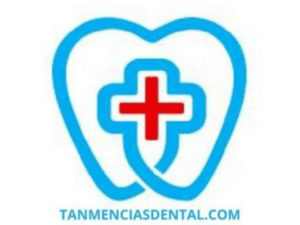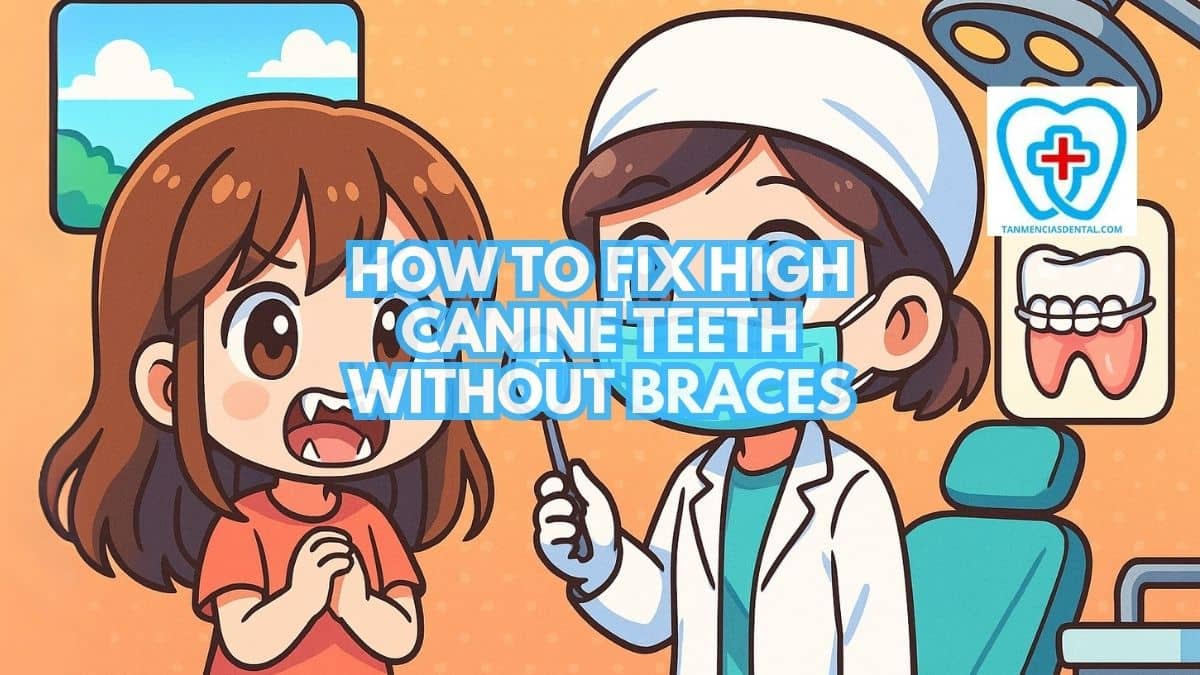High canine teeth are teeth that come in above the normal gum line or higher than nearby teeth.
This can affect both how your smile looks and how your teeth fit together when you bite.
Many people want options that don’t involve traditional metal braces.
Luckily, there are several ways to correct high canines without using brackets or wires.
We’ll explain those options clearly and simply.
1. Causes And Appearance Of High Canine Teeth
High canines often happen when there’s not enough space in the upper jaw for all the teeth.
If baby teeth stay in too long, they can block the adult canines from coming in properly.
In other cases, the canine may grow in the wrong direction or stay trapped under the gum.
These teeth usually appear pointed and sit higher than the others, which can make cleaning harder and affect your bite.
Genetics and jaw size are significant factors contributing to this phenomenon.
🦷 How to Fix Buck Teeth Without Braces
2. Importance Of Professional Dental Assessment
A dental checkup is the first step before choosing any treatment.
The dentist may use X-rays or 3D scans to see exactly where the canine teeth are and how they’re positioned.
This helps them find the cause—whether it’s crowding, poor alignment, or a stuck tooth.
Without a thorough examination, treatment may not be effective or could cause new problems.
A clear diagnosis helps create the best plan for safe and effective results.
🦷 How Long Does Swelling After Wisdom Teeth Removal Last?
3. Tooth Extraction To Create Space
If crowding is the problem, removing one or more teeth might help.
Dentists may take out a baby tooth or a nearby adult tooth that’s blocking the canine.
Making space allows the high canine to shift down naturally in some cases.
This method is simple but only works when the canine has a good chance of moving into the gap.
The dentist will check your X-rays to decide if this is the right step.
🦷 What To Do With Wisdom Teeth After Removal
4. Palatal Expansion For Jaw Widening
A narrow upper jaw can prevent canine teeth from coming in properly.
A palatal expander is a small device that gently widens the roof of the mouth over time.
It creates more room so the teeth have space to line up correctly.
This tool is usually used in children or early teens, when bones are still growing.
The treatment is pain-free and is adjusted slowly for safe results.
🦷 How to Brush Your Teeth Without a Toothbrush
5. Clear Aligners For Gentle Tooth Movement
Clear aligners are plastic trays that fit over the teeth and move them a little at a time.
They can be used to guide high canines into the right place without using metal braces.
These aligners are nearly invisible and can be removed for meals or brushing.
They work well in mild to moderate cases where enough room can be made by shifting other teeth.
The treatment is planned in stages using digital models of the mouth.
🦷 Tips and Remedies to Reduce Swelling After Wisdom Teeth Removal
6. Surgical Exposure To Help Canines Erupt
Sometimes, the canine tooth is stuck under the gums and won’t come down on its own.
In this case, a dentist may do a small surgery to uncover the tooth.
Once the tooth is exposed, a device may be placed to help it move into position.
This step is often used along with clear aligners or other tools.
It’s done by a specialist and helps the tooth erupt correctly over time.
🦷 Brushing Your Teeth with Orange Juice: What You Need to Know
7. Tooth Transplantation For Severe Cases
In rare cases, the canine tooth is in a spot where it can’t be moved with tools or aligners.
A tooth transplant may be needed, where the dentist removes the tooth and places it into the correct space.
This procedure is complex and is only done when no other options will work.
It requires careful healing and follow-up care to make sure the tooth stays healthy.
Only a skilled dental specialist should perform this treatment.
🦷 Simple Ways to Straighten Your Teeth at Home Without Braces
8. Combining Multiple Treatment Methods
Often, no single treatment works by itself to fix high canines.
For example, a person might need space made with an extraction, then use aligners to move the tooth, and have surgery if the canine is stuck.
Combining treatments can improve the final result and reduce the time it takes to fix the problem.
The steps are planned carefully to protect the teeth and gums.
Dentists choose these combinations based on the shape of the jaw and how far off the canine tooth is.
🦷 Considering Alternatives to Dental Implants After Losing a Tooth
9. Patient Suitability And Treatment Limitations
Not all treatments are right for every person.
Younger patients often have more options because their bones are still developing.
Adults may need more complex care, especially if the tooth is deeply impacted.
Some teeth may be too damaged or in a position that limits treatment choices.
The dentist will explain what is realistic and safe for your specific case.
🦷 How to Close Gaps in Your Teeth Without Braces: Benefits and Drawbacks
10. Consulting A Dental Specialist For Guidance
Specialists like orthodontists and oral surgeons have the training to fix high canines without braces.
They know which methods are likely to work best based on the shape of your mouth and the position of your teeth.
A general dentist may refer you to one of these experts if your case is more complex.
Getting the right advice early can prevent mistakes and delays.
Always ask questions and make sure you feel confident about your treatment plan.
🦷 Complete Dental Care in Marikina
👨⚕️ Conclusion
Fixing high canine teeth without braces is possible in many cases.
Treatments like tooth removal, jaw widening, clear aligners, and small surgeries can all help.
The right choice depends on how the teeth are positioned and how much room there is.
A full dental exam is the first step to finding the best plan for your mouth.
With the right care, high canines can be treated safely and effectively, without the need for braces.
😊 Self-Promotion
Visit us at Tan-Mencias Dental Clinic, located at 44 G. Del Pilar Street, Parang, Marikina City, for caring and professional dental services.
Our friendly team is here to help you with your smile and answer any questions you may have.
You can call us at 0917-145-1074, send us a message on our Facebook page, or use the contact form on our website.
We make sure every patient feels safe, heard, and well cared for.
Come and see why families in Marikina trust us with their dental needs!

